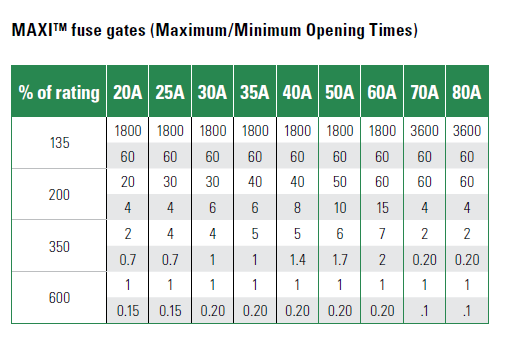British vs American Fuses
British did things just a little bit different than the Americans, including what the ratings marked on fuses mean. The British Standard rated fuses by the current that was guaranteed to make them blow instantly while the American (and now international) standard rates fuses by the current that they will carry forever. Fuses work on heat, so a small overload may take a long time to build up enough heat to melt the fusible element and blow the fuse. How warm the fuse was to begin with plays a large role too. So the carry rating winds up being quite a bit lower than the blow rating… the difference is roughly 2 to 1!
So, what this means to you is that, if you elect to use common American standard fuses (Bussman is one maker, there are others), you need to use a much lower rated fuse than what your manual says to use. There have been cases reported where a restored Triumph has caught fire from a short, because someone used American fuses with the Triumph recommended rating marked on them… the short did not blow the fuse but instead set the wiring harness on fire!
Here is a conversion chart, lifted from a long-ago Bussman fuse catalog:
Bussman Conversion Chart
English Type American Standard Replacement
50 amp AGC 30
35 amp AGC 25
30 amp AGC 20
25 amp AGC 15
20 amp AGC 10
10 amp AGC 7 1/2
5 amp AGC 3
Personally, I feel even this chart results in fuses rather larger than needed, so for example I use an AGC 20 to replace the original “35 amp” fuse in my TR3A. My conversion chart would go more like :
Randall’s Recommendations
English Type American Standard Replacement
50 amp AGC 25
35 amp AGC 20
30 amp AGC 15
25 amp AGC 15
20 amp AGC 10
10 amp AGC 5
5 amp AGC 3
Tim Buja and Glenn Merrell put on a good visual demonstration of the difference in fuse ratings at VTR this year, where they first put in a “25 amp” Lucas-equivalent fuse and applied enough load to blow it. Then they installed a “25 amp” American fuse and applied the same load. The fuse did not blow, but after just a minute or so the wire started visibly leaking smoke…
By the way, proper fuses with the correct British markings are available from the usual suspects (Moss, The Roadster Factory, Victoria British, etc.). The British Standard fuses are also a slightly different physical size than American standard fuses, so it’s probably best to buy the proper British fuses. American fuses fit in most British fuse holders, but not all of them.
The above is information I found when trying to find replacement fuses.
Bob





